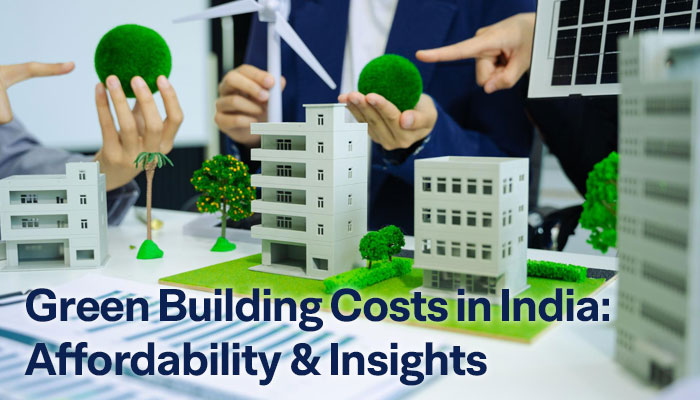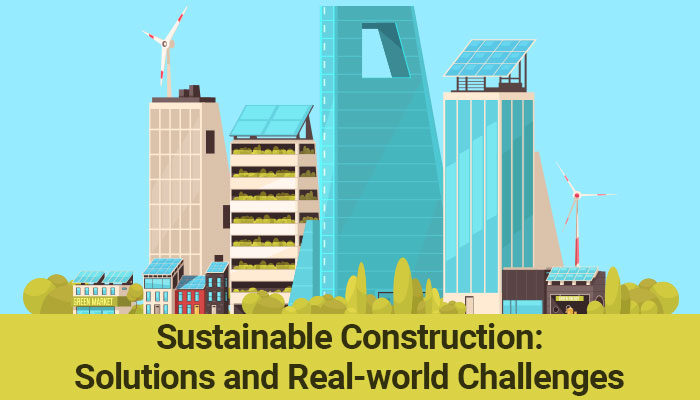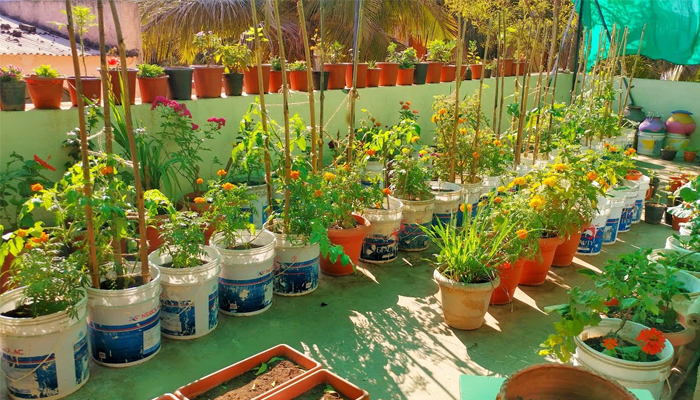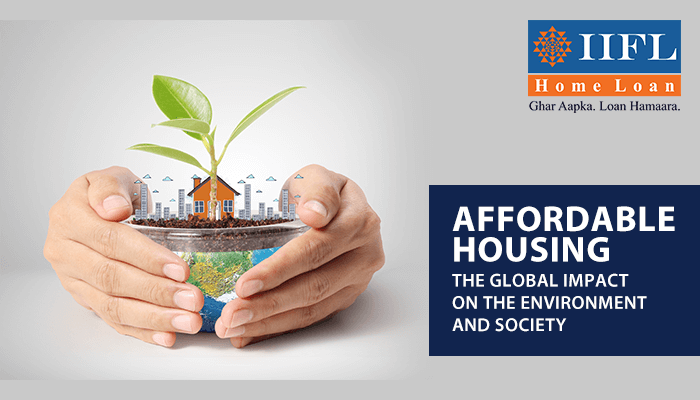What is Green and Affordable in The Long Run

Did you know the four or five storey tall buildings are “greener” than ten or twelve storey high buildings?
And did you know that four to five storey high buildings are more affordable in the long run than 10 to twelve storey high buildings?
In other words, - it is greener and most economical to build and maintain four to five storey high buildings.
Let us understand this.
The materials we use in making buildings, especially in towns and cities are no longer natural materials. We use burnt bricks, concrete blocks, steel, cement, glass, PVC more and more. All these materials require a great deal of energy in their manufacture. This energy is called Embodied Energy – the energy that has been used to make the material. About 70% of this energy is produced by burning fossil fuels. As we use these materials more and more, we are increasing the carbon dioxide emissions into the atmosphere and adding to the basic cause of Climate Change.
Of all the materials that we use in buildings today the worst culprit is steel.
EVERY Kg OF STEEL SENDS OUT 1.37 Kg of CO2 INTO THE ATMOSPHERE!
Typically, the steel consumed for every square metre of the floor area in a multi-storey building ranges from 25 kg of steel for three or four storey buildings up to 55Kg of steel for twelve storey high buildings. The taller we build the more steel intensive the structural system becomes. This is further compounded if you are in a high earthquake intensity zone or you have to resist the winds of cyclonic storms.
So, build four to five stories high and stay Green.
What About Cost and Affordability?
The RCC structure of a building – its foundations, its columns and beams, its floor slabs and roof will cost from 40% to 60% of the total construction cost of the building. The other major cost is walls, especially external walls – about 15 to 20% of the total cost of construction. The structural of the building and its walls are the basic essentials of a house or a block of flats. You cannot do without them!
So, the strategy for economising on construction cost requires looking at walls and structure together. Some principles:
-
Build Low-rise. Four storeys high buildings cost 12% less than eight stories high buildings. The operation and maintenance costs of eight stories high buildings will be double compared to operation and maintenance cost for four story high buildings – mainly because of the lifts and pumps.
-
Keep spans short. 3 metres to 4 metres. Do not exceed 4.5 metres. The requirement of reinforcement steel in the floor slabs and beams increases by the square of the span. If a 3-meter span requires 9 units of reinforcement steel, a 4-meter span will require 16 units, and a 4.5-meter span will require 20.25 units!
-
Use lightweight walling material for multistorey buildings above three storeys tall. The lighter the walls the less the steel and concrete requirement in the structure. Consider using AAC block walls – 200mm or 230mm thick for external walls and 100mm or 15mm thick for internal walls. There is a new material that is coming in the market – hollow clay block.
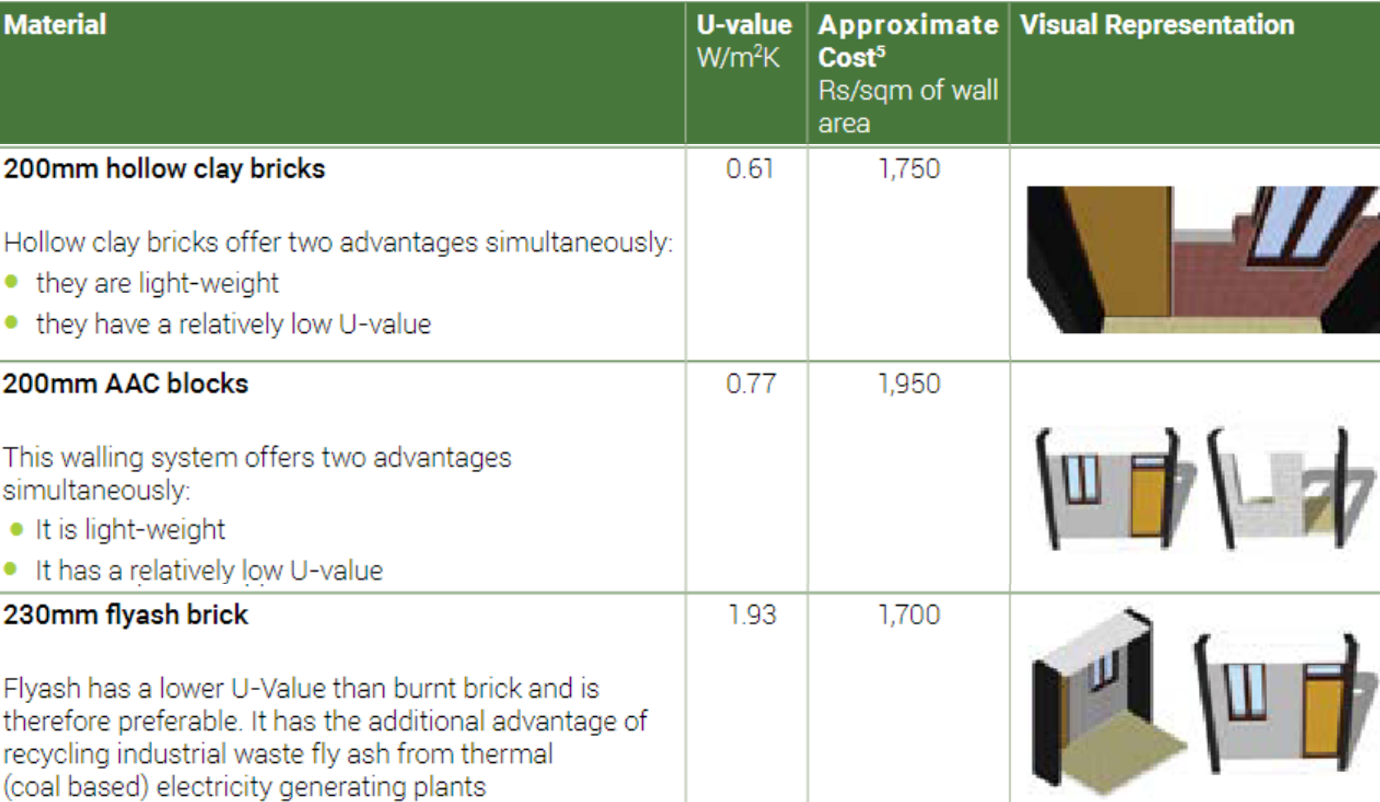
(Source: IIFL Home Loans’ Building Green Guide to Sustainable Affordable Housing by Ashok B. Lall Architects in collaboration with CDD Society)

(Source: IIFL Home Loans’ Building Green Guide to Sustainable Affordable Housing by Ashok B. Lall Architects in collaboration with CDD Society)
Both these materials weigh approximately 600 kgs / Cum.
Fired solid clay bricks weigh approximately 1800 kgs / Cum
-
Plan a compact building plan.
House ‘A‘ of 100 sqm floor area is planned in an L shape.
House ‘B’ of 100 sqm floor area is planned in a square shape.


House A has a perimeter wall length of 50 metres.
House B has a perimeter wall length of 40 meters.
Now, if we pair up each type of house so that they share a common wall, we get this:
The pair of House type A has a perimeter wall length of 90 metres.

The pair of House type B has a perimeter wall length of 60 meters.

Which planning method is economical? The COMPACT planning method.
Developers often say that they cannot afford to provide basic things in their homes for the comfort, health and wellbeing of residents. This means that either they have incurred unnecessary expenses due to uneconomical planning and structural design, building tall to maximise profits on land. Or they do not realise what really matters for the health and wellbeing of residents.
Every Home Buyer Deserves:
-
A roof that is well insulated, conforming to the insulation value specified in the Eco Niwas Sanhita Code, with a reflective roof finish. This is essential to reduce the harsh impact of the sun hitting the roof.

Use reflective surface on terraces to help reduce solar heat gains
(Source: IIFL Home Loans’ Building Green Guide to Sustainable Affordable Housing by Ashok B. Lall Architects in collaboration with CDD Society)
-
Windows that are well shaded from outside against the unwanted sun.

(Source: IIFL Home Loans’ Building Green Guide to Sustainable Affordable Housing by Ashok B. Lall Architects in collaboration with CDD Society)
-
Windows that are not oversized, close tight when closed, open fully for good ventilation when opened.

(Source: IIFL Home Loans’ Building Green Guide to Sustainable Affordable Housing by Ashok B. Lall Architects in collaboration with CDD Society)
Walls that face Eastwards toward the hot morning sun and Westwards toward hot afternoon sun to be insulated – equivalent of 200mm thick AAC block wall.

(Source: IIFL Home Loans’ Building Green Guide to Sustainable Affordable Housing by Ashok B. Lall Architects in collaboration with CDD Society)
-
External walls to be painted with light colours – preferable white or ‘eggshell’.

(Source: IIFL Home Loans’ Building Green Guide to Sustainable Affordable Housing by Ashok B. Lall Architects in collaboration with CDD Society)
LET US DEMEND WHAT WE DESERVE FROM OUR DESIGNERS AND BUILDERS.
Tags
Disclaimer: The information contained in this post is for general information purposes only. IIFL Home Finance Limited (including its associates and affiliates) ("the Company") assumes no liability or responsibility for any errors or omissions in the contents of this post and under no circumstances shall the Company be liable for any damage, loss, injury or disappointment, etc. suffered by any reader. All information in this post is provided "as is", with no guarantee of completeness, accuracy, timeliness, or of the results, etc. obtained from the use of this information, and without warranty of any kind, express or implied, including, but not limited to warranties of performance, merchantability, and fitness for a particular purpose. Given the changing nature of laws, rules, and regulations, there may be delays, omissions, or inaccuracies in the information contained in this post. The information on this post is provided with the understanding that the Company is not herein engaged in rendering legal, accounting, tax, or other professional advice and services. As such, it should not be used as a substitute for consultation with professional accounting, tax, legal or other competent advisers. This post may contain views and opinions which are those of the authors and do not necessarily reflect the official policy or position of any other agency or organization. This post may also contain links to external websites that are not provided or maintained by or in any way affiliated with the Company and the Company does not guarantee the accuracy, relevance, timeliness, or completeness of any information on these external websites. Any/ all (Home/ Loan Against Property/ Secured Business Loan/ Balance Transfer/ Home Improvement Loan/ NRI Home Loan/ Home Loan for Uniformed Services) loan product specifications and information that may be stated in this post are subject to change from time to time, readers are advised to reach out to the Company for current specifications of the said (Home/ Loan Against Property/ Secured Business Loan/ Balance Transfer/ Home Improvement Loan/ NRI Home Loan/ Home Loan for Uniformed Services) loan.
 Login
Login






